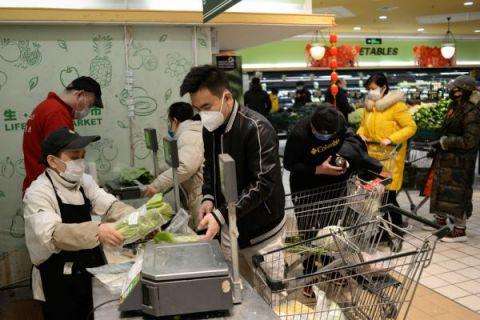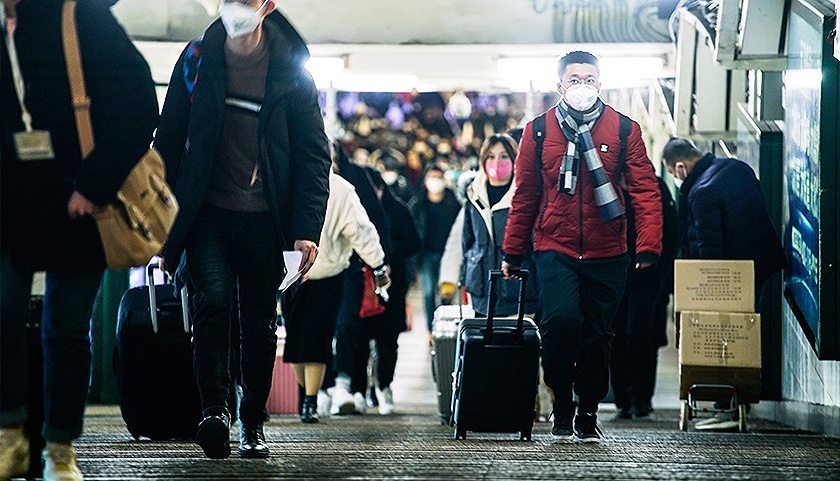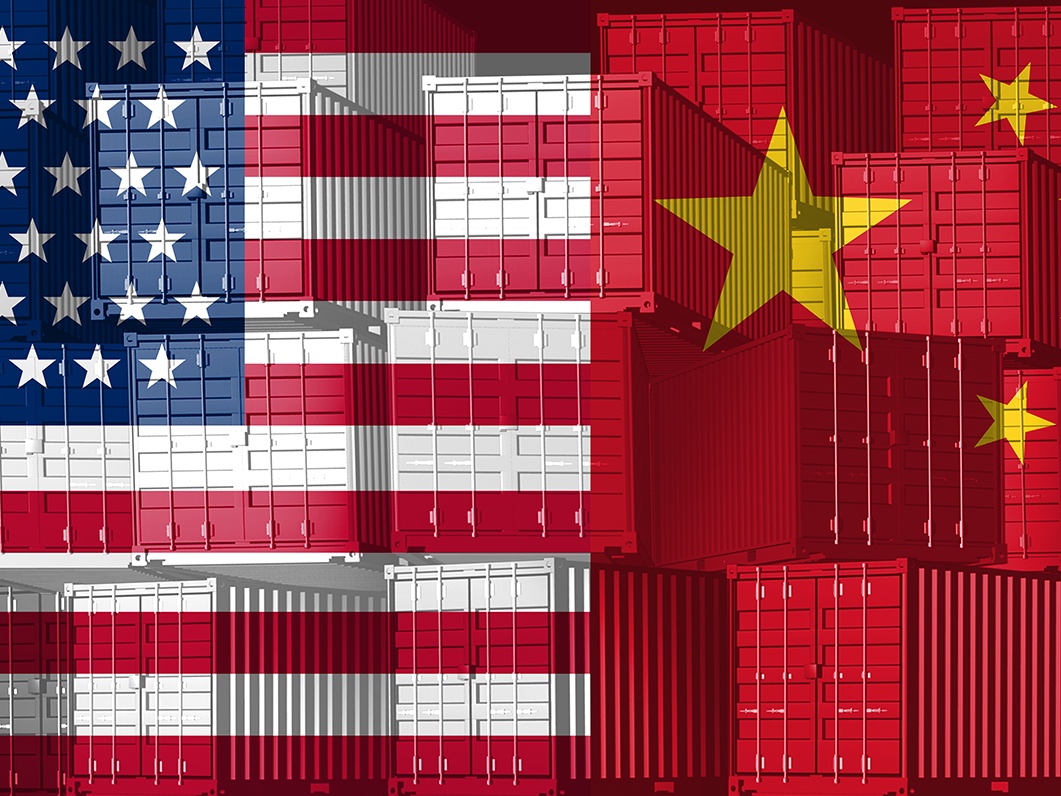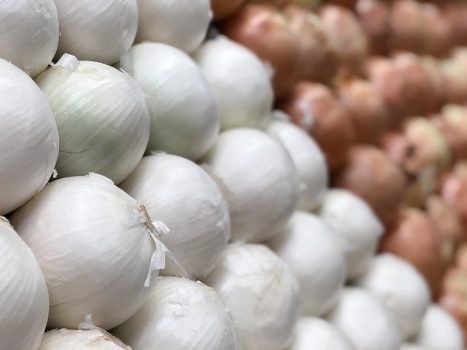While the gravity of the China-born Coronavirus cannot be downplayed in terms of infection and human illness, and world trade is undeniably affected by the virus’ rapid spread, two solid sources have told us U.S. onion exports aren’t as likely to be impacted as other produce items.
Our friends Stu Fallon and Peter Ng looked at the situation this week, telling us that amidst China/Taiwan import and export disruptions for multiple crops and commodities, U.S. export onions have been less affected. Peter did say the situation is somewhat different in Japan, however.

Stu, head of Portland-based SL Follen Co., is regarded as an industry export in worldwide produce exports and reported from his office in the Pacific Northwest. And Peter, who has an extensive background in international sales and handles exports for Peri & Sons in Yerington, NV, addressed our questions within days of his return from Japan.
In February the USDA issued a statement noting ag trade with Taiwan was affected by “new quarantine measures, port closures, vessel delays, and suspended flights as U.S. agribusiness exporters struggle to find available space for cargo.” It went on to say that “systemic delays are impacting overall U.S. agricultural exports bound for Taiwan and the world,” and “Taiwan authorities have noted the deleterious impact on their domestic industry and are acting to mitigate trade disruption.”

Stu, who provided photos from a customer in Beijing, said, “The emergence of CV in China has really had no impact on U.S. onion exports,” adding that our domestic onion export season “typically winds down by February except for minor volumes.” He said, “By February, New Zealand takes over suppling traditional Asia and SE Asia onion markets… that are supplied by U.S onions from August through January. To my knowledge there have been no onions denied entry into a country due to CV.”
Agreeing that the U.S. doesn’t export much onion volume to China, Peter went on to tell us about the market Japan. “The situation is Japan is tense, and business is slow in general with retail businesses off by at least 50 percent,” he said. He continued, “As far as Japanese onions are concerned, their growers have been able to keep the price high because excess local supplies were exported to nearby countries at cheaper prices.” And, Peter said, “This is why it has been such a tough deal on U.S. onion exports this current season. In addition, export season is mostly over, but there could be some U.S. onions heading for some markets over in Asia.”

We asked both Peter and Stu about ancillary industries such as packaging materials and containers that might come from China, and we got interesting and differing responses. Peter said, “I have to believe U.S. onion growers are able to sustain the reduced supply of indirect materials related to the onions production. In the past, packing materials were mostly manufactured in the USA. I am sure we can revert to some domestic U.S. packaging.”
Stu said the supply chain disruption can be far-reaching, adding, “Many U.S. companies buy packing materials, chemicals, textiles and other goods from China. I would be surprised if we do not in the near future experience shipping delays for many of these products.”

As of March 3, Stu said, “China is back to work now. People are finally showing up for their jobs. Chinese ports are starting to clear up the back log of containers and goods, and products are finally starting to move to final destinations, both inbound and outbound.”
However, “Normal business is still probably 60 days away as issues still remain. If CV situation gets worse, then so will the problems we are facing today.”
And, he said, “Economic activity in China has decreased significantly during the CV outbreak. Restaurants are quiet, and few people go out to shop. Consumption of many goods has been greatly reduced. This will cause economic hardship for many Chinese companies and ultimately affect demand for US imported goods.” That, by extension, Stu said could “affect U.S. production of certain products that are exported to China.
Having just been there for a first-hand look at the Pacific Rim’s business landscape, Peter said, “Business is also down in [markets] like Singapore, Malaysia, Hong Kong, Thailand, etc. all over in Asia.” Moreover, he said, “I do see it creeping into the U.S. economy. Travels restrictions have been placed [primarily] on people that have been to China, Korea and now Italy.” Peter said that the restrictions were heaviest to Asian countries, but he said his return from Japan was uneventful.
“There was no health inspection point set up at LAX with thermal cameras when I got back [March 2], and no questions were asked.”
Peter said that although the U.S. exports very little to China, “China is a major producer of onions, and they are exporting a decent amount in terms of fresh onions and whole peeled onions.” He said China “is not a key market for U.S. exporters,” and he also said, “I met a Japanese client last week, and he told me there is no issue getting whole peeled onions from China.”
Then he added, “For other items going to China, it is just a disaster in my opinion.” One example is that the price of dragon fruit “has crashed badly as China is importing.” Peter said exporters who send masks, sanitizing items and disposable paper products to China “will do well.”
Stu commented on the long-and short-term effects on trade, saying, “There have been significant short-term issues due to the CV outbreak.” Those include, he said, “container supply imbalance,” which he said is short-term and significant; work at Chinese ports “severely curtailed due to lack of workers” and the fact that “33 percent of all container movements world-wide goes through China or touches China ports.”
Stu also said that ships have “experienced big delays in off-loading and on loading in China, and ship schedules have become “unpredictable,” with some vessels cancelled. In this country, “U.S. West Coast ports have been experiencing container shortages” due to situation in China.
Addressing reefer containers, Stu said, “Due to congestion in China and the disruption of the container rotation, reefer container deliveries to China were interrupted, and containers have been off-loaded in other countries waiting for open space in China.” That, he said, has “created extra cost for ocean carriers, and they have recently all announced
congestion surcharges of $500-$1000 per 40-foot reefer container to offset costs.”
He said China’s lack of exports is “short-term and significant.” Stu explained, “Already there are global shortages of certain Chinese agriculture products that dominate supply. Examples include garlic and ginger. And, he said, “European and North American importers are searching to replace Chinese items that are currently in extremely short supply. While most likely a short-term situation, the shortages are already acute.”
Acknowledging the long-term impact of Coronavirus is “as much an unknown as is the duration of the CV virus,” Stu said, “If CV lasts for some time, three to four months, then the supply chain could be impacted long-term as importers will no longer want all their supply from China and will seek to diversify.” He said, “The risk of having all your production in ‘one basket’ will be too big.”


